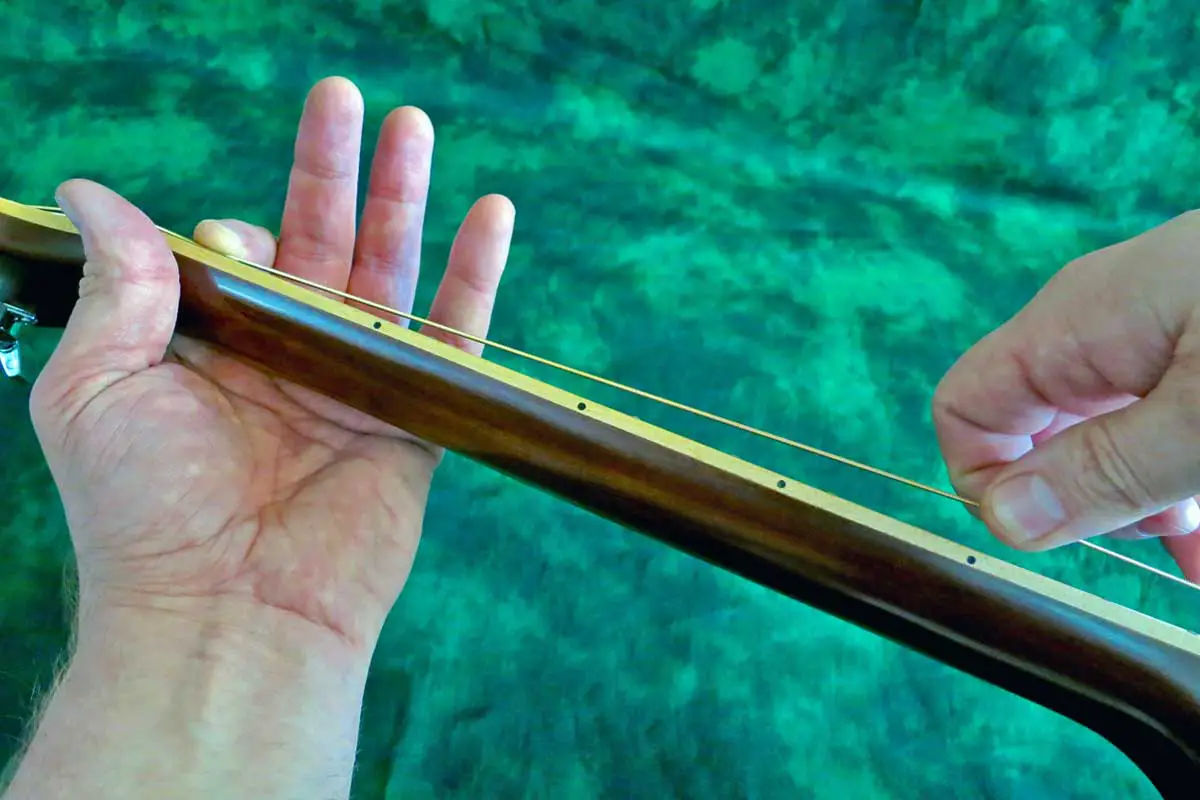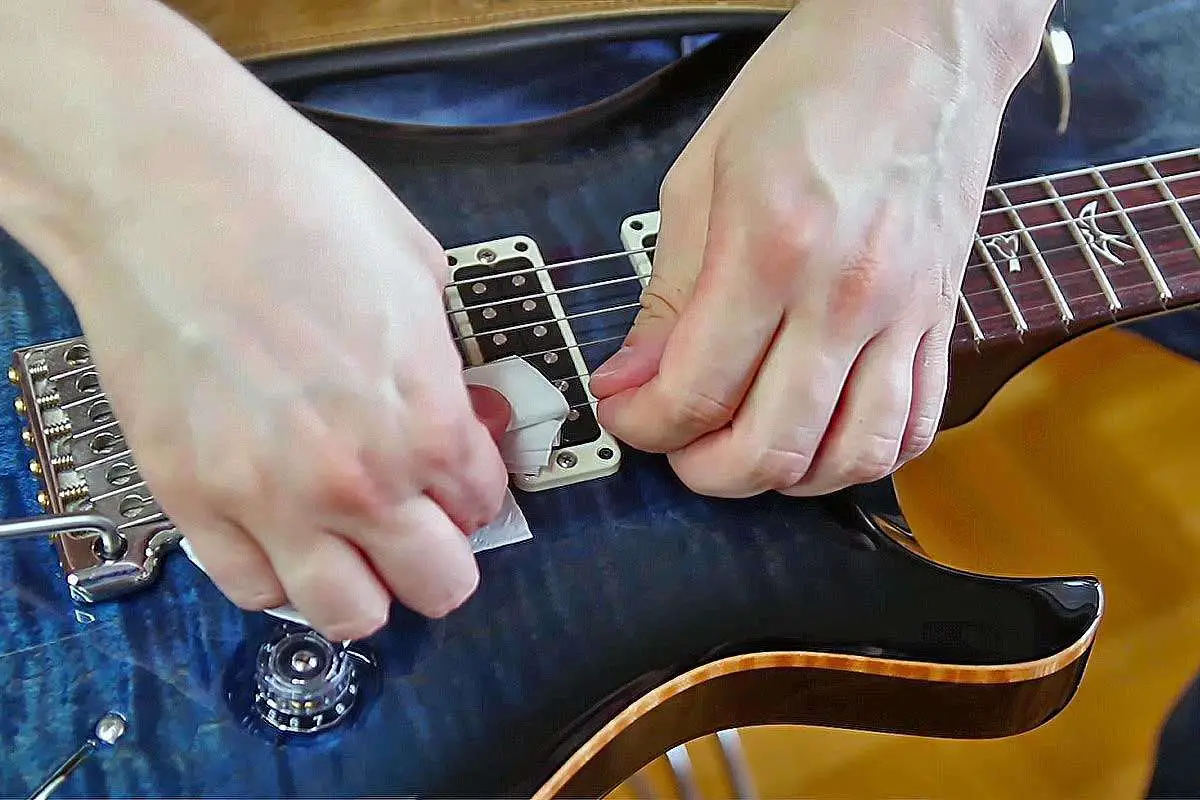When you pick up your guitar, one of the first things you ensure is that it’s in tune. The pitch of your guitar is critically influenced by the tension of the strings, which can change as they stretch over time. Learning how to Stretch guitar strings is a common practice among guitarists to maintain stable tuning. This pre-stretching process helps the strings settle into a consistent tension, enabling the guitar to stay in tune longer after you’ve tuned it up.
Stretching your guitar strings is particularly important after installing a new set. Fresh strings tend to stretch naturally with use, causing the guitar to fall out of tune frequently during the initial period of playing. By manually stretching the strings, you accelerate this settling process, achieving a stable pitch more quickly. This not only improves the sound of your guitar but also saves you time during practice or performance, as you won’t need to retune as often.
The sound quality of a guitar is directly related to the accuracy of its tuning, which is why understanding how to properly stretch your strings is crucial. Whether you’re strumming a chord or bending a note, the tension and elasticity of the strings play a role in how the guitar resonates and responds to your touch. Learning the right technique to stretch your strings will not only preserve the integrity of your instrument but will enhance the expressiveness of your playing.

Understanding Guitar String Stretching
When you first install new strings on your guitar, they require proper stretching to maintain tuning stability. This process is essential to achieve optimal sound and playability.
The Importance of Stretching Strings
Stretching your guitar strings is crucial as it helps to ensure your guitar remains in tune. New strings have a degree of elasticity, and without a proper initial stretch, they can slip at the nut or bridge, causing your guitar to go out of tune quickly. When you perform stretching correctly, you’re effectively stabilizing the overall tension, which leads to more accurate tuning even after aggressive playing techniques or bends.
How Strings Settle Over Time
As you play your guitar, strings naturally settle over time through repeated pressing against frets and constant tension changes. This settling is part of why a newly re-strung guitar often goes out of tune until the strings have adapted to the constant stretching. By settling, the strings fit better over the nut and seat correctly in the bridge grooves, contributing to consistent tuning stability in every playing position. Regularly playing and properly stretching the strings can help them settle faster.
Related: How Often To Change Strings
Step-by-Step Stretching Process
When you’ve got new strings on your guitar, you’ll need to stretch them properly to ensure they hold tune and respond well to your playing. This process involves careful manipulation using your fingers and attention to each string’s tension to avoid potential damage.
Preparing New Strings for Stretching
Before you begin the stretching process, make sure your new strings are correctly installed and tuned up to just below their standard pitch. Handling the strings gently, start with the low E string, as it’s the thickest and can handle more force than the higher strings.
The Correct Way to Stretch Strings
Gently grip the string with your fingers at the first fret and lift it away from the fretboard slightly, applying moderate force. Move up the neck, doing this at every fret up to the 12th fret. Then, retune the string as it will have dropped in pitch. Repeat this process across all strings, using the same amount of force for consistency.
Ensuring Even Tension Across Strings
After you’ve stretched each string, retune and then play for a while. Repeat the stretching and tuning cycle a few times until the strings maintain pitch stability. This helps ensure even tension across the strings and is a crucial part of the string stretching process to break in new strings effectively.
Maintaining Your Guitar Post-Stretching
After you’ve stretched your guitar strings, maintaining the instrument is crucial to ensure that the tuning stability is retained and the strings’ lifespan is maximized. Proper care involves regular retuning, taking steps to minimize the risk of breakage, and maintaining the condition of your guitar.

Retuning After Stretching
Retuning your guitar is an essential step after stretching your strings. The process of stretching can temporarily destabilize the strings’ tuning, so you should retune frequently until they settle. Check tuning at the start of each practice session and adjust as necessary, especially at the nut and bridge areas.
Tips to Avoid String Breakage
To avoid breaking your strings, follow these tips:
- When tuning, turn the tuning pegs gently and gradually.
- Ensure there are no sharp edges at the nut and bridge that could stress the string and lead to breakage.
- Keep the guitar neck straight; excessive bowing can increase tension on strings.
- Avoid fast, aggressive strumming techniques that can overstress the strings.
Guitar Maintenance for String Longevity
Maintaining your guitar can significantly extend your strings’ lifespan and performance. Always:
- Clean your strings after playing to remove oils and dirt.
- Regularly check and lubricate the nut and bridge with an appropriate product.
- Conduct periodic inspections of your guitar’s hardware to ensure everything is tight and well-seated.
By attentively maintaining your guitar post-stretching, you encourage a stable, resilient instrument that consistently sounds its best.
Troubleshooting Common Issues
When you face persistent tuning problems or issues with string slippage and bending, knowing how to address these challenges can alleviate a lot of your frustration and lead to a more stable tuning. The key is to approach these issues methodically.
Dealing with Persistent Tuning Problems
Your electric guitar or classical guitar can often go out of tune, which could be a result of several factors. For nylon strings, give them ample time to stretch and settle. Try these steps:
- Ensure you’re turning the right tuning key while watching the string you’re tuning.
- Check the condition of your tuning pegs; if they are loose, they might need tightening or replacement.
- After new strings are installed, manually stretch them gently but firmly to help them reach a stable tuning faster.
Addressing String Slippage and Bending Issues
String slippage can contribute to your guitar falling out of tune, especially after bending strings or vigorous playing. To help combat this, consider the following:
- Ensure the strings are properly wound around the tuning pegs: aim for neat, orderly wraps without overlap.
- When restringing, leave enough slack to achieve around two to three full winds around the peg for optimal tension.
- If you frequently experience slippage with bending, your technique may need adjustment. Use controlled motions and return to the string’s original position gently to maintain tuning integrity.
By addressing these common issues with the correct methodology, you should see an improvement in your instrument’s tuning stability and string performance.
